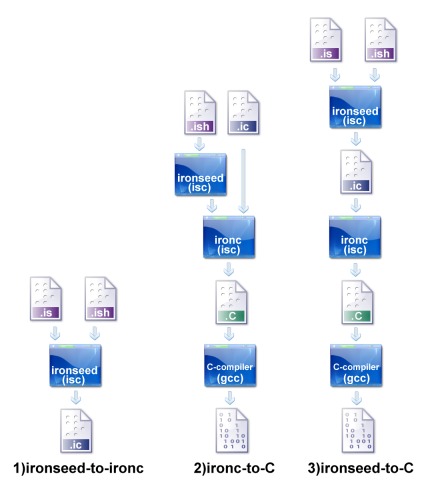At this moment, compiler works in three ways: as ironseed-to-ironc
mode, as ironc-to-C mode and as ironseed-to-ironc-to-C mode.
/In future, it is planned to make also ironseed-to-bytecode
and bytecode-to-asm modes./

1) In ironseed-to-ironc mode, compiler takes ironseed sources and
(optionaly but almost inevitably) ironseed headers and creates
an ironc output.
2) In ironc-to-C mode compiler ought to know what
data units available (e.g. class names and types, methods,
functions) so it parses ironseed headers and converts ironc
source to plain C.
3) ironseed-to-ironc-to-C mode just runs first than second mode
with exception that no headers needed for ironc-to-C mode
since data is already parsed and all language units are
known at the moment of ironc source generation.
 1) In ironseed-to-ironc mode, compiler takes ironseed sources and
(optionaly but almost inevitably) ironseed headers and creates
an ironc output.
1) In ironseed-to-ironc mode, compiler takes ironseed sources and
(optionaly but almost inevitably) ironseed headers and creates
an ironc output.